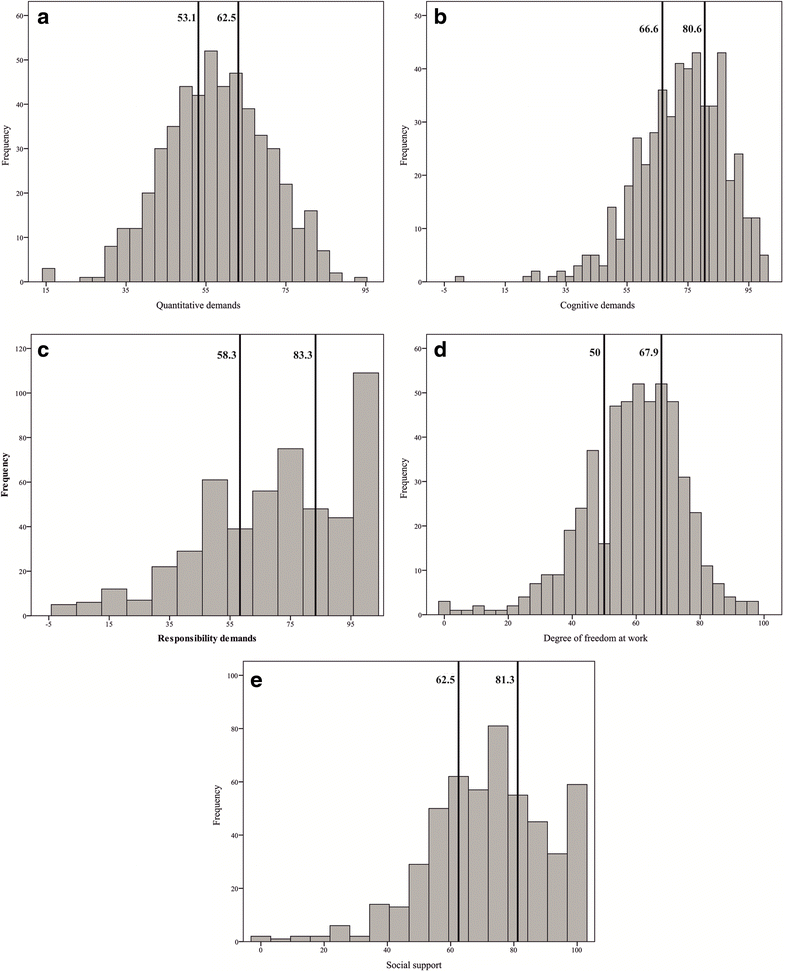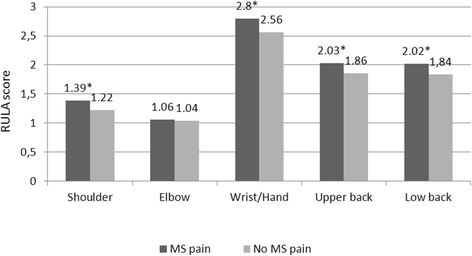Associations between musculoskeletal pain and work-related factors among public service sector computer workers in Kaunas County, Lithuania
- PMID: 27717347
- PMCID: PMC5055679
- DOI: 10.1186/s12891-016-1281-7
Associations between musculoskeletal pain and work-related factors among public service sector computer workers in Kaunas County, Lithuania
Abstract
Background: Information technologies in occupational activities have been developing very rapid. Epidemiological studies have shown that musculoskeletal disorders are widely prevalent among employees working with a computer. The aim of this study was to evaluate the prevalence of musculoskeletal pain in various anatomical areas and its associations with individual, ergonomic, and psychosocial factors among computer workers of the public sector in Kaunas County, Lithuania.
Methods: The investigation consisting of two parts - questionnaire study (Nordic Musculoskeletal Questionnaire and Copenhagen Psychosocial Questionnaire) and direct observation (evaluation of work ergonomics using the Rapid Upper Limb Assessment [RULA]) - was carried out in three randomly selected public sector companies of Kaunas County. The representative study sample comprised 513 public service office workers. The prevalence of musculoskeletal pain in five anatomical areas of the body (shoulders, elbows, wrists/hands, as well as upper and low back) was evaluated.
Results: The prevalence rates of shoulder, elbow, wrist/hand, upper and low back pain were 50.5 %, 20.3 %, 26.3 %, 44.8 %, and 56.1 %, respectively. Individual factors such as gender, age, computer work experience, and body mass index were found as significant for musculoskeletal pain in various musculoskeletal regions. The respondents reporting pain in shoulder, wrist/hand, upper back, and low back areas had a statistically significantly higher mean RULA score. The duration of working with a computer was found as a significant factor for shoulder pain. High quantitative demands were related to musculoskeletal pain in all investigated anatomical areas expect for the low back; weak social support was a significant predictor for complaints in upper and low back areas.
Conclusion: This study confirmed associations between musculoskeletal pain and work ergonomics; therefore, preventive measures at the workplace should be directed to the improvement in ergonomic work environment, education, and workload optimization.
Keywords: Computer work; Ergonomics; Musculoskeletal pain; RULA.
Figures



References
-
- Health and safety at work in Europe (1999–2007). European Commission, Employment, Social Affairs and Equal Opportunities, Luxembourg, 2010. http://ec.europa.eu/eurostat/documents/3217494/5718905/KS-31-09-290-EN.P.... Accessed 23 Feb 2016
-
- Cook C, Limerick BR, Chang S. The prevalence of neck and upper extremity musculoskeletal symptoms in computer mouse users. Int J Ind Ergon. 2000;26:347–356. doi: 10.1016/S0169-8141(00)00010-X. - DOI
MeSH terms
LinkOut - more resources
Full Text Sources
Other Literature Sources
Medical

